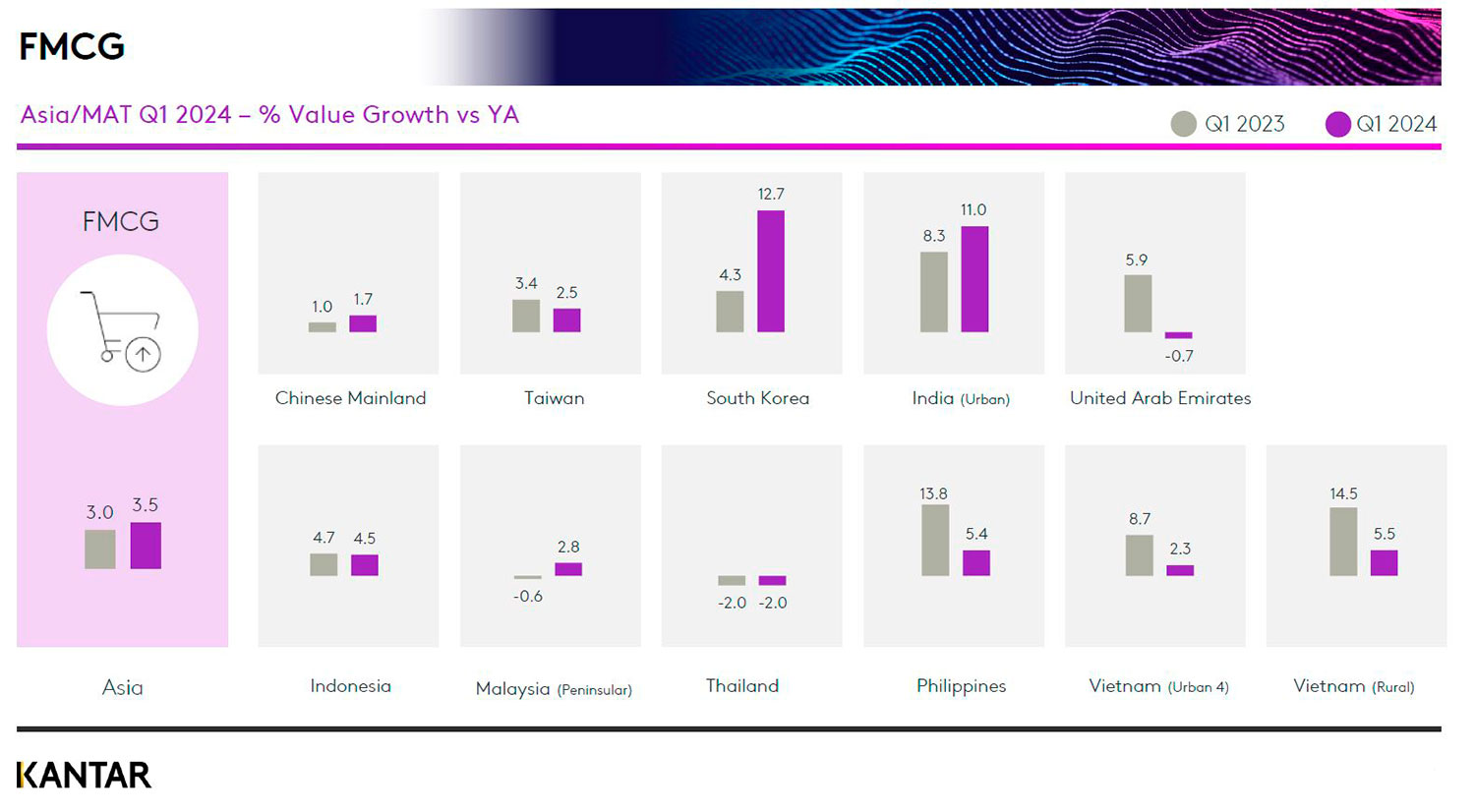As 2024 began, Asia continued to demonstrate its economic resilience with growth in FMCG spend of 3.5%, slightly higher than the previous year. Notably, the beverages sector led this growth with an impressive 9.2% rise in value sales, compensating for slower growth in the dairy and home care sectors.

Kantar’s Worldpanel Asia Pulse Q1 2024 report spans 10 markets, highlighting the dynamic shifts and trends across the region.
Market highlights:
Chinese Mainland
China’s FMCG market maintained a modest recovery in the first quarter of 2024, with year-on-year sales growth of 2.6%. The eastern region showed more positive growth, increasing by 7% compared to the same period last year, demonstrating its economic vitality and the strength of consumer purchasing power.
Taiwan
Although purchase frequency decreased, consumer demand was evident in the increased spending per shopping trip, indicating no reduction in households’ overall expenditure. In categories like laundry products, consumers are spending more to meet advanced needs. Personal care is also recovering, due to increased spending in face care categories.
India
Household shopping occasions grew across all major channels in Q1, with the fastest growth achieved by chemist shops and online platforms. In addition, consumers are spending more per trip across the channels they visit. However, basket size in terms of volume hasn’t improved, indicating continuing caution among shoppers.
South Korea
Single-person households account for 34.5% of the total population in Korea. Consequently, there is an increasing need for small packaging and small-sized products, leading to changes in consumer trends. Additionally, as the country approaches a super-aged society, economically empowered active seniors are emerging as a key consumer group.
United Arab Emirates
In Q1 of 2024 shopping frequency increased substantially due to Ramadan, but spending per trip remained stable. Consumers made more frequent purchases without increasing their total expenditure.
Indonesia
Growth in modern trade remains constrained, whereas general trade’s growth is being driven by price rather than volume. Specialty stores and e-commerce are becoming the preferred channels for categories like baby products, beauty, and personal care, presenting the opportunity to attract and recruit new shoppers.
Malaysia
The easing of food and beverages prices has driven an increase in in-home expenditure. There is growth in packaged groceries, beverages, and toiletries, while the dairy sector continues to be impacted. Shoppers are still spending cautiously, however, making fewer trips and deprioritising non-essential categories.
Thailand
The demand for in-home consumption of cooking products is slowing, along with home care products, as consumers spend more time out and about. At the same time, the need for personal care is recovering. Limited household budgets are causing a shift to more affordable choices in some categories. Within packaged food, consumers seek more convenient snacks and meals to eat at home.
Philippines
During the festive season, Filipino shoppers purchased more per trip, but maintained the same number of trips. They prioritised spending on food, beverages and dairy, as highlighted in the boost in sales of soft drinks, bottled water, family milk, and cooking oil.
Vietnam
Fuelled by a positive economic outlook, Vietnamese consumers are more hopeful about the country’s economic progress. Despite positive signs, however, their spending has not caught up and FMCG growth in the main urban areas has remained stagnant.
Stay informed about the latest insights and trends in the Asia-Pacific FMCG sector with the newest edition of Asia Pulse. Fill in the form below to access the report and reach out to our experts.

